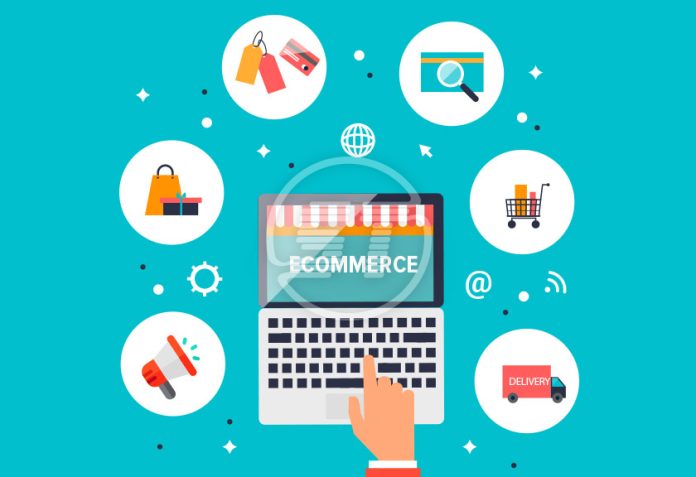Ecommerce marketing strategies can seem to be an elusive beast to understand. There are so many different ways you can market your products and services, it’s hard to know where to start and how to get the best results from your marketing efforts. To help out ecommerce marketers everywhere, here are nine proven eCommerce marketing strategies that will help you increase your online sales significantly.
1) Create an Effective Product Display
If you’re an eCommerce business, you know that online shopping is highly competitive. Consumers are prone to quickly skim and browse your product offerings in search of better deals, then click off without making a purchase. According to one study, 61% of consumers will buy after visiting only two pages, so it’s critical that you make a great first impression with your product images and descriptions—which is where a good eCommerce development company can help.
2) Use Email Marketing
Email marketing allows you to reach consumers directly with news, offers and other information about your business. It is a form of direct marketing that allows companies to send advertisements and messages straight into their customers’ inboxes. Email marketing is one of the most cost-effective forms of digital advertising because it can deliver targeted, personalized messages with low overhead costs. Because email has such high open rates (the average is around 22 percent), it also has a high rate of conversion for online sales. The best part? You don’t need any technical knowledge or web development skills to set up an email campaign. All you need is an email account and access to your company’s email marketing platform.
3) Lead Generation Is Vital To The Success Of Your Store
Lead generation is one of those ecommerce marketing strategies that people often under-appreciate. It’s true that it’s not a particularly flashy strategy, but it is absolutely vital to your business’ success. Lead generation involves reaching out to potential customers in order to get them interested in your product or service before they purchase anything—even if you don’t convert these leads into buyers right away, you can use them as an opportunity for future sales.
4) Choose Relevant Influencers
When you know who your customer is, which channels they prefer to use, and what they respond best to, it’s time to start bringing those people into your store. Influencer marketing can be tricky if you don’t choose wisely. Work with an eCommerce development company that has experience finding relevant bloggers and community members that fit with your product or service and your target demographic.
5) Reward Customer Loyalty
Reminding your customers that you appreciate their business, sending them coupons or promotional deals via email and social media, not only helps you build loyalty but also keeps your brand top of mind. When shoppers are thinking about where they’re going to buy their next item, your goal is for them to think of you first. In order for a customer loyalty program to work well in eCommerce, it needs to be flexible and fit into your company’s overall marketing strategy.
6) Optimize For Mobile Visitors
Most consumers now use their mobile devices to visit eCommerce sites, and they want to experience all of your features from their phone. Keep in mind that almost 60% of users expect a mobile-friendly website; if you have an eCommerce site, take time to optimize for it. Hire eCommerce developers who know what people like about your products and keep those features available on mobile screens. Also, consider using responsive design so that your eCommerce site will be compatible with multiple screen sizes. If you don’t already have a mobile-friendly eCommerce site, consider switching to one. You can hire an agency or developer to help you with these changes—or do it yourself by checking out some tutorials online or reading books on developing websites. Remember: when optimizing for mobile visitors, make sure you’re keeping them happy while still offering them everything they need from their desktop computer!
7) Engage Customers Through Comments and Reviews
According to BrightLocal’s 2016 Local Search Ranking Factors report, 42% of consumers said that customer reviews were very important when evaluating local businesses. In a similar survey from 2014, 67% of consumers said they read online reviews before visiting a local business. By encouraging customers to leave feedback on your site and on third-party sites such as Yelp and Google+, you can create more trust with new visitors and keep current customers coming back for more. The best part: getting feedback is easy! You can set up an automated system so that every time someone places an order, you ask them to review their experience. For example, if someone purchases something from you through Amazon, you could use Feedback Genius to automatically send them a request for a review once their order has shipped. Alternatively, some companies will provide incentives in exchange for reviews (such as discounts or free products).
8) Promote On Facebook, Twitter and Instagram
If you’re serious about your eCommerce business, you’ll want to take a holistic approach that also involves social media. Social media doesn’t have a direct impact on increasing sales, but it does help build trust with customers and reduce shopping cart abandonment rates. Build out your online marketing strategy by hiring an eCommerce development company India and driving traffic from Facebook, Twitter and Instagram. These channels are great for building brand awareness and driving more people to your website.
9) Offer A Free Shipping Option
Many consumers often avoid buying online because they’re afraid of shipping costs. One way to get around that is by offering free shipping. This makes it more likely that customers will choose your e-commerce site over a competitor’s, and it can boost sales for online stores already doing good business. It can also serve as a great customer-retention strategy, since some shoppers only shop with businesses that offer free shipping. Free shipping should be an obvious part of your marketing plan from day one.
Conclusion
eCommerce is hot. With more people going online and more ways to go online than ever before, eCommerce sites are getting a huge amount of traffic from all over the world. But that traffic doesn’t translate into sales until you market your products and services effectively. These nine strategies will help you get your products in front of prospective customers—customers who may be ready to buy! And once they’re ready, hiring an eCommerce developer is a great way to help those potential customers turn into real ones. So what are you waiting for? Get out there and start maximizing your online sales!



















